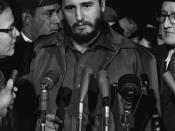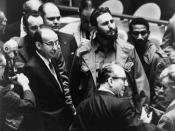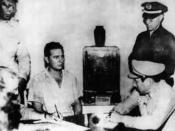Cuba is the largest island in the West Indies and it lies South of Florida and east of the Yucatan Peninsula of Mexico. In comparison Cuba is about the size of the state of Pennsylvania and is highly subjected to hurricanes from the month of August to October. It is 90 miles off the coast of South Florida's Keys and is the largest country in the Caribbean. From the latter of the early twentieth century to the early twenty first century, Cuba has under gone massive changes, in its relation to the United States, its people and the rest of the world.
Of a mixed race, Caucasian, Negro and Chinese, Fulgenico Batista Y Zaldivar ruled Cuba from 1934 to 1940, where he helped to draft a liberal constitution, becoming the first elected president under the new document in 1940, and from 1952 to 1958, before Fidel Castro threw him out.
In 1952, Batista suspended the constitution, dissolved the congress, and instituted a provisional government, promising elections the following year. After crushing an uprising led by young lawyer named Fidel Castro on July 26, 1953, the regime seemed secure, and when the political situation had been calmed, the Batista government announced that elections would be held in the fall of 1954, but he was re-elected without opposition regardless.
During this time, Cuba even served as a "playground" for wealthy Americans. In 1948, Cuba joined the Organization of American States (OAS), and with the world sugar prices inflating, Cuba's main export, the country retrained an excellent relationship with the United States. However, on March 13, 1957 University students, members of the opposing political party stormed the Presidential Palace with plans to assassinate Batista. The arrangement did not go as planned because they were betrayed by a young communist who informed the palace...



Good Job
Hey, you did a great job! Your essay is super! It gives a really good overview and I like your opening was good because it gave a view of Cuba! Thanks
3 out of 3 people found this comment useful.